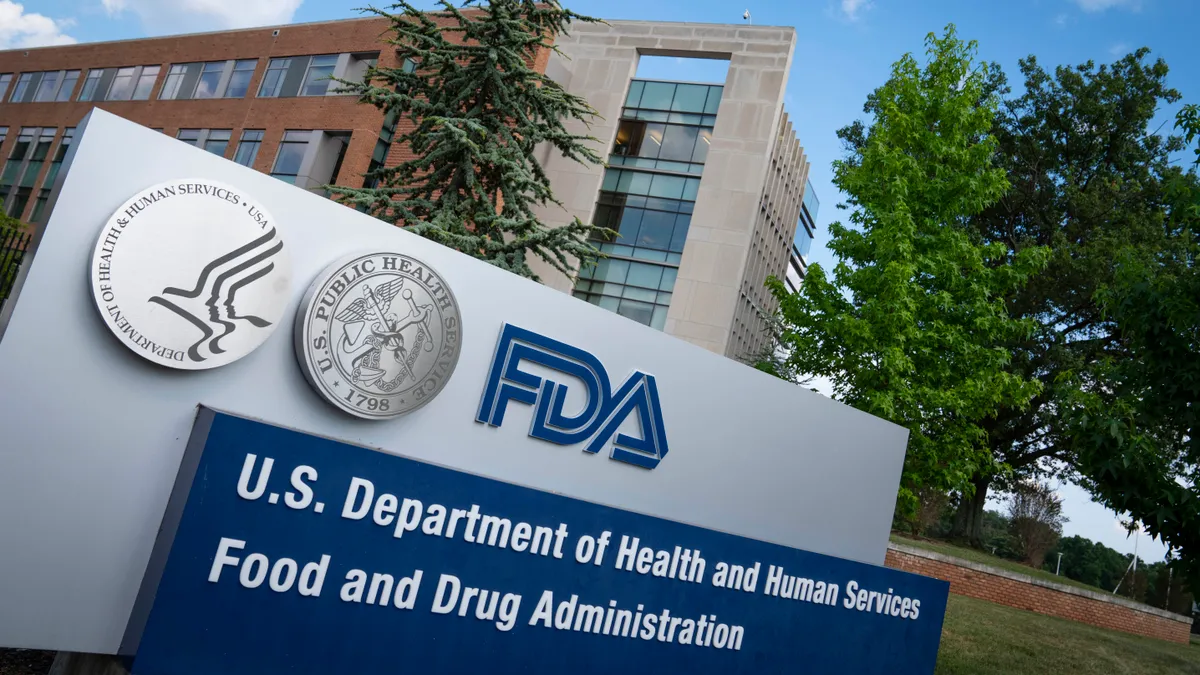Dive Brief:
- FDA has released its list of proposed draft and final medical device guidance documents for fiscal year 2022. The list is heavy on documents related to software, including the long-gestating guidance on clinical decision support (CDS) software.
- Four of FDA's high-priority draft and final guidance documents address software, including one planned for publication on software premarket submission that FDA failed to post in time to meet its MDUFA IV commitments.
- FDA also plans to publish two draft documents setting out transition plans for medical devices covered by COVID-19 enforcement policies or emergency use authorizations. Test developers will need to get diagnostics authorized using traditional premarket review processes to support post-pandemic use.
Dive Insight:
FDA divides its planned guidelines into an A-list featuring prioritized documents and a B-list of texts it intends to publish. This year, the A-list is topped by the final guidance on clinical decision support software, the first draft version of which was released in 2017. FDA published a revised draft text for consultation in 2019.
The agency received more than 30 comments on the original draft text, including feedback from the American Medical Informatics Association that warned the guidance may leave "lingering confusion" about the regulatory status of software. FDA received even more comments on the second draft.
FDA is now seemingly close to finalizing the guidance, positioning it to clarify when CDS meets the definition of a medical device and set out a risk-based framework for the software functions.
Bradley Merrill Thompson, attorney at Epstein Becker Green, said the "software flavor" to the agency's 2022 agenda is important because "there is tremendous need in clarifying how the general medical device requirements apply to software" which in many cases is "a different beast than hardware." However, he lamented that the CDS document has been five years in the making.
While Thompson was pleased that clinical decision support is an A-list priority, he expressed his disappointment that "it is almost 2022 and we are still waiting on that guidance from a 2016 piece of legislation."
Work on the final guidance is advancing alongside development of several drafts related to FDA’s regulation of software. The list of high-priority draft guidelines features a text on “Computer Software Assurance for Production and Quality System Software” that FDA had originally planned to publish in its fiscal 2021, as well as a document on cybersecurity elements of quality systems and premarket submissions.
With the increased number of cyberattacks on healthcare organizations, FDA is seeking additional legislative authorities meant to bolster medical device cybersecurity.
FDA's third high-priority software draft for fiscal 2022 is titled Content of Premarket Submissions for Software as a Medical Device (SaMD) and Software in a Medical Device (SiMD). FDA was supposed to release draft guidance on the latter by the end of fiscal 2019, with the final text following within 12 months of the close of the comment period. The failure to hit the deadline was a rare black mark against FDA in a review of MDUFA goals.
The agency’s B-list of lower priority guidance documents also features two software-related drafts. The agency plans to release drafts on Marketing Submission Recommendations for A Change Control Plan for Artificial Intelligence/Machine Learning (AI/ML)-Enabled Device Software Functions and Risk Categorization for Software as a Medical Device in its next fiscal year. The AI document is on the lower-priority list despite it being more than two years since a related discussion paper.
Thompson criticized FDA for assigning a lower B-list priority to the guidance on marketing submissions for a change control plan for AI/machine learning enabled device software functions.
"I had thought based on the way they were promoting their activities on that topic that it would've been a higher priority. Indeed, I thought we were supposed to see that guidance this year, and now I see that it's only category B for next year. That's backsliding," Thompson said.
Away from software, FDA plans to use next year to set out its plans for moving beyond the pandemic era of medical device regulation. The A-list features two draft documents on the transition plans for Medical Devices That Fall Within Enforcement Policies Issued During the Coronavirus Disease 2019 (COVID-19) Public Health Emergency and for EUAs issued during the pandemic.
FDA has issued 266 EUAs for SARS-CoV-2 molecular tests and many other emergency authorizations for other diagnostics. At some point, FDA will need to transition COVID-19 tests to routine regulatory requirements, leading it to plan draft guidance on the change in policy.
Dennis Gucciardo, partner at law firm Morgan Lewis, said the medtech industry has been anxiously awaiting these guidance documents from the agency, especially COVID-19 test developers.
However, Gucciardo contends that if the U.S. public health emergency continues deep into fiscal year 2022, it’s possible that these guidances will not get issued as planned and "FDA will continue its enforcement policies and emergency authorizations into FY 2023."
BioFire Diagnostics in March became the first company to win a full FDA marketing authorization for a COVID-19 test using the De Novo pathway. Subsequent applicants can demonstrate substantial equivalence to BioFire's respiratory panel and use the 510(k) pathway.











